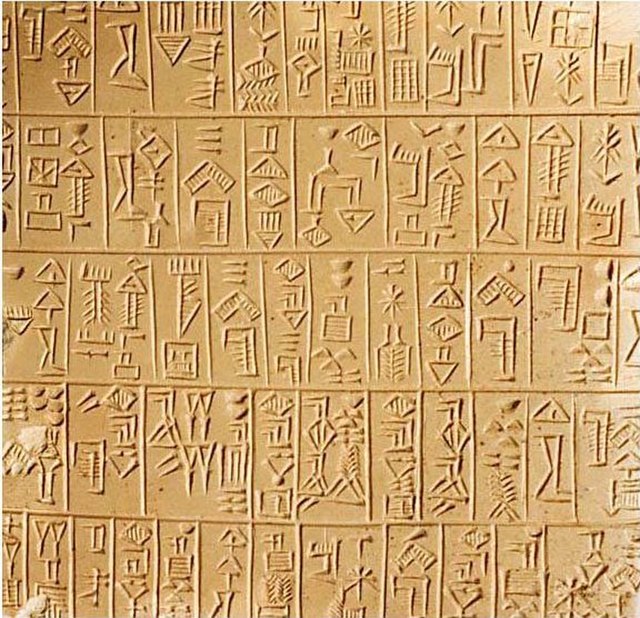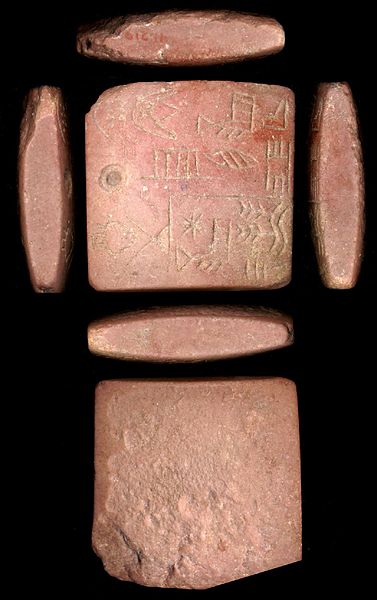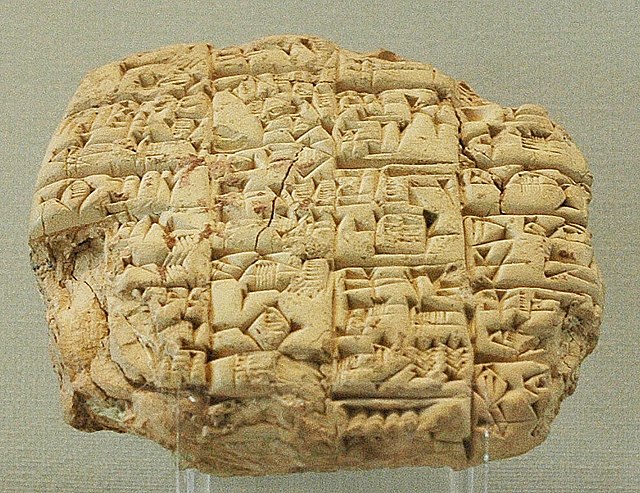Sumerian is the language of ancient Sumer. It is one of the oldest attested languages, dating back to at least 2900 BC. It is accepted to be a local language isolate and to have been spoken in ancient Mesopotamia, in the area that is modern-day Iraq.
Sumerian language
This proto-literate tablet (c. 3100 – 2900 BC) records the transfer of a piece of land (Walters Art Museum, Baltimore)
The first known Sumerian-Akkadian bilingual tablet dates from the reign of Rimush. Louvre Museum AO 5477. The top half is in Sumerian, the bottom half is its translation in Akkadian.
Letter sent by the high-priest Lu'enna to the king of Lagash (maybe Urukagina), informing him of his son's death in combat, c. 2400 BC, found in Telloh (ancient Girsu)
Sumer is the earliest known civilization, located in the historical region of southern Mesopotamia, emerging during the Chalcolithic and early Bronze Ages between the sixth and fifth millennium BC. Like nearby Elam, it is one of the cradles of civilization, along with Egypt, the Indus Valley, the Erligang culture of the Yellow River valley, Caral-Supe, and Mesoamerica. Living along the valleys of the Tigris and Euphrates rivers, Sumerian farmers grew an abundance of grain and other crops, a surplus which enabled them to form urban settlements. The world's earliest known texts come from the Sumerian cities of Uruk and Jemdet Nasr, and date to between c. 3350 – c. 2500 BC, following a period of proto-writing c. 4000 – c. 2500 BC.
The Blau Monuments combine proto-cuneiform characters and illustrations of early Sumerians, Jemdet Nasr period, 3100–2700 BC. British Museum.
Enthroned Sumerian king of Ur, possibly Ur-Pabilsag, with attendants. Standard of Ur, c. 2600 BC.
Portrait of a Sumerian prisoner on a victory stele of Sargon of Akkad, c. 2300 BC. The hairstyle of the prisoners (curly hair on top and short hair on the sides) is characteristic of Sumerians, as also seen on the Standard of Ur. Louvre Museum.
A pottery jar from the Late Ubaid Period








